Located in the province of Sancti Spiritus in central Cuba, Trinidad means trinity in Spanish, referring to the holy trinity. It’s an apt name as this stunning colonial town is usually the third stop on a tour of Cuba, after Viñales and Havana.
*This post may contain affiliate links, as a result, we may receive a small commission (at no extra cost to you) on any bookings/purchases you make through the links in this post. As an Amazon Associate, we earn from qualifying purchases. Read our full disclosure
In many respects, Trinidad, Cuba combines the best aspects of both cities, being culturally vibrant but less hectic than Havana, while surrounded by the sort of scenery that makes Viñales and nearby Santa Clara so memorable.
You’ll find plenty of fun things to do in Trinidad, Cuba, so it’s a must on any Cuba itinerary – it’s like seeing a land preserved in time. Not much has changed since the 1950s, and the colourful buildings and classic cars make it a photographer’s dream and a cultural paradise.
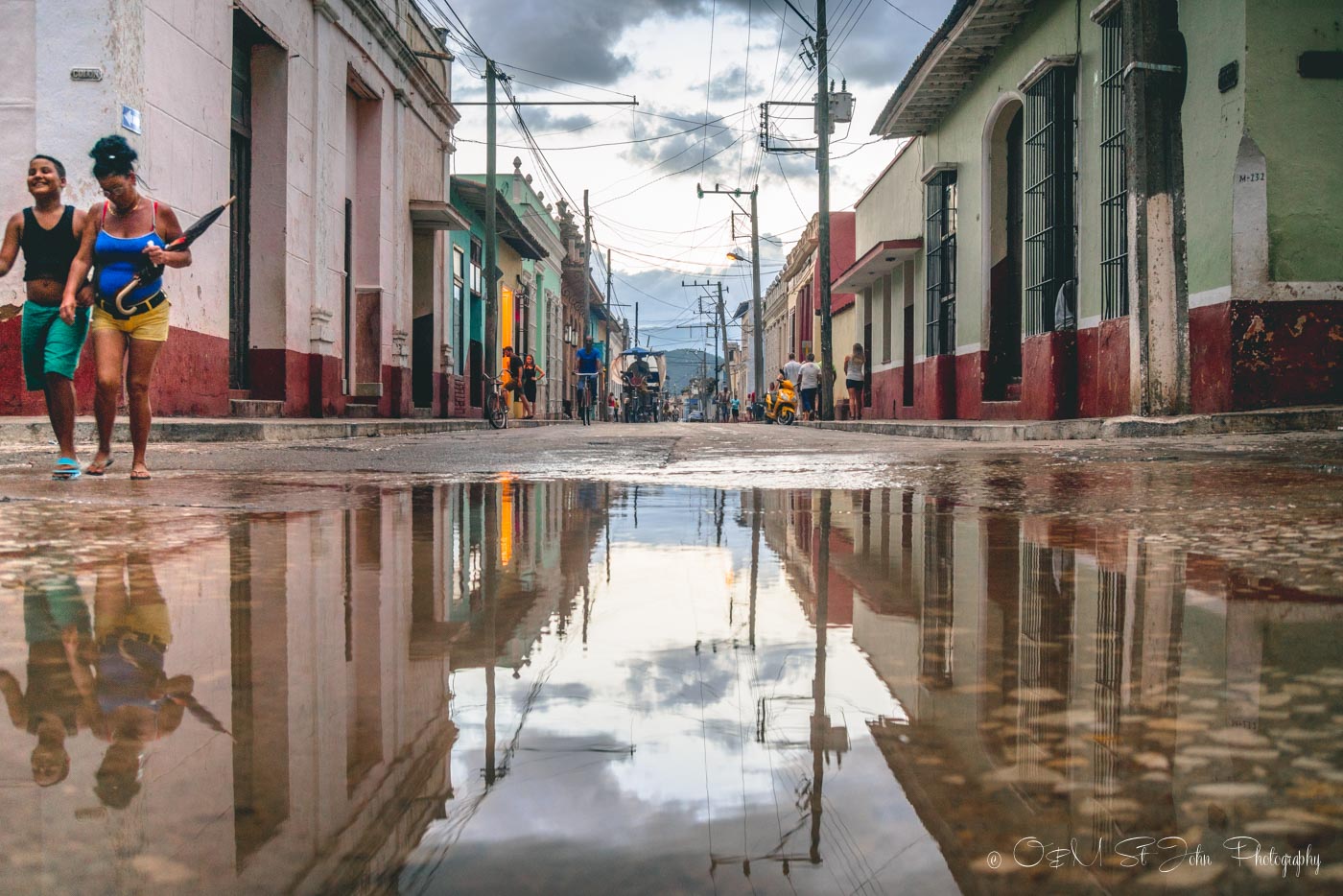
Traveling Soon? Here is a list of our favourite travel providers and accessories to help get you ready for your upcoming trip!
Why Visit Trinidad, Cuba
When you’re looking for fun things to do in Trinidad, Cuba, a walk around town is a great place to start. Also known as Trinidad de Cuba, this town is a visual feast, with some of the best-preserved architecture in Cuba, and it has a relaxed atmosphere that is appealing to those who want to stroll around and soak up Cuban culture.
As a coastal city, it provides a great opportunity to visit the long beaches of dazzling white sand for which Cuba is famous.
If you want to see imposing colonial churches, picturesque squares and pretty homes with furnishings from a bygone era, this UNESCO World Heritage site is the place to do so. This historic town is full of winding cobblestone streets lined with countless relics from the past.
Founded in the early 16th century, Trinidad flourished at the height of the sugar industry in the nearby Valle de los Ingenios, a group of three interconnected valleys – San Luis, Santa Rosa, and Meyer. This area benefited from the warm tropical climate favourable for sugar cane farming and is the site of 75 historic sugar mills and plantation houses.
Trinidad Cuba, does get a lot of tourist footfall, but it feels significantly less claustrophobic than Havana due to the wide roads and lack of cruise ships (which are increasingly embarking at the Cuban capital).
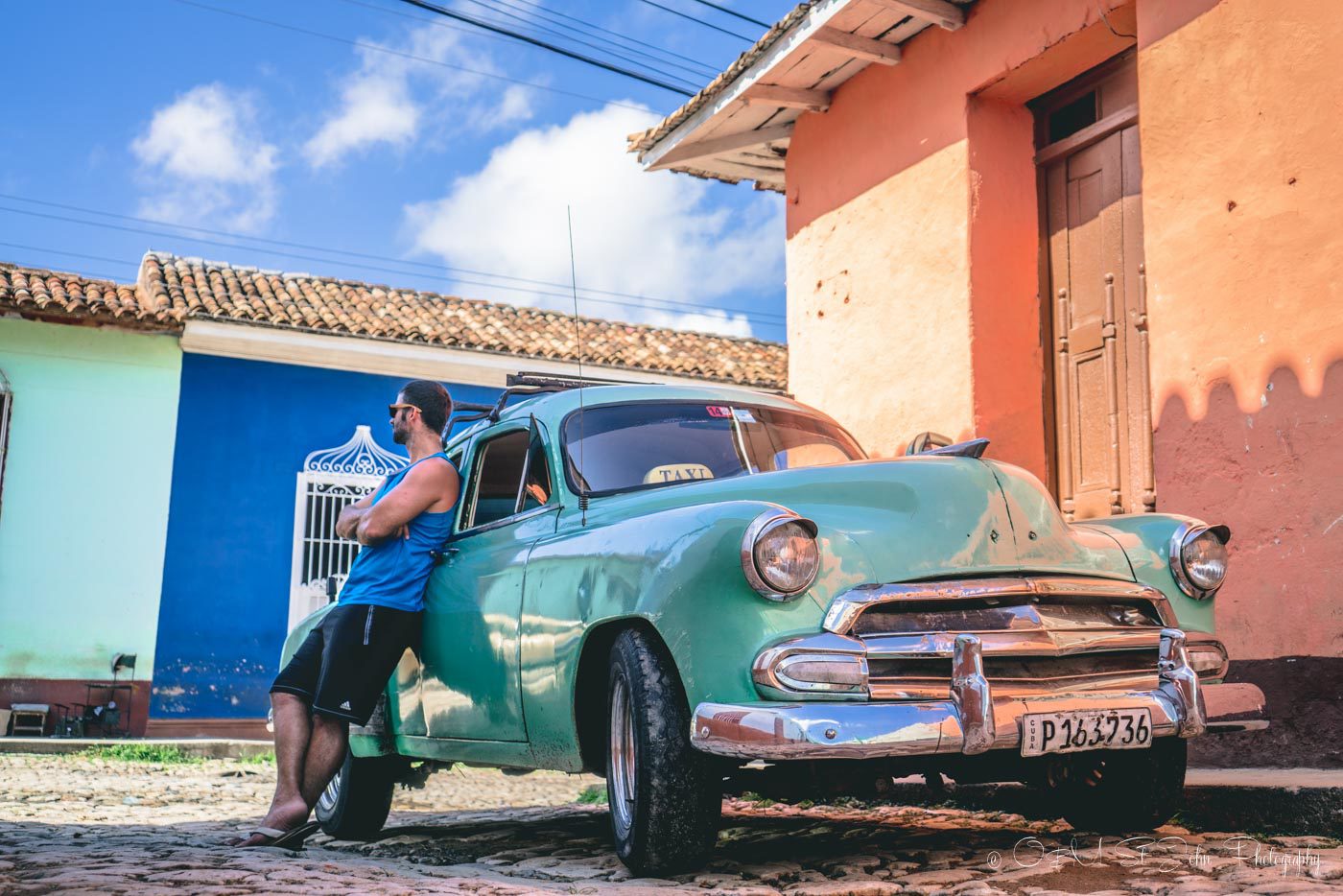
Best Time To Visit Trinidad, Cuba
It’s worth noting that whatever time of year you plan on visiting Trinidad or any other place in Cuba, you should book in advance. This is not just some scare tactic dreamt up by the tour operators – the island is genuinely straining under a huge weight of tourism for which its infrastructure is not adequately prepared.
In terms of weather, as long as you avoid the hurricane season, it’s much of the same. The Caribbean just splits into wet and dry seasons, but in reality, tourists are often surprised by the amount of rain there, though usually in the form of short, sharp showers that come and go.
If you are tempted by the lower prices of the off-season (June to November), do bear in mind that Cuba has been hit by some devastating hurricanes in the past. Indeed in 1992, the main railway bridge that connected Trinidad to other parts of Cuba was destroyed by a hurricane. Going between December and March is the most pleasant time of year as the air will be less humid.
Another consideration is festivals and special events. The Semana de la Cultura Trinitaria (Trinidad Culture Week) in January, the Festival Internacional Boleros de Oro and the Fiestas Sanjuaneras in June, and Moncada Day in July could all make good focal points for your trip, though you’ll have to weigh up the chances of worse weather for the summer festivals.
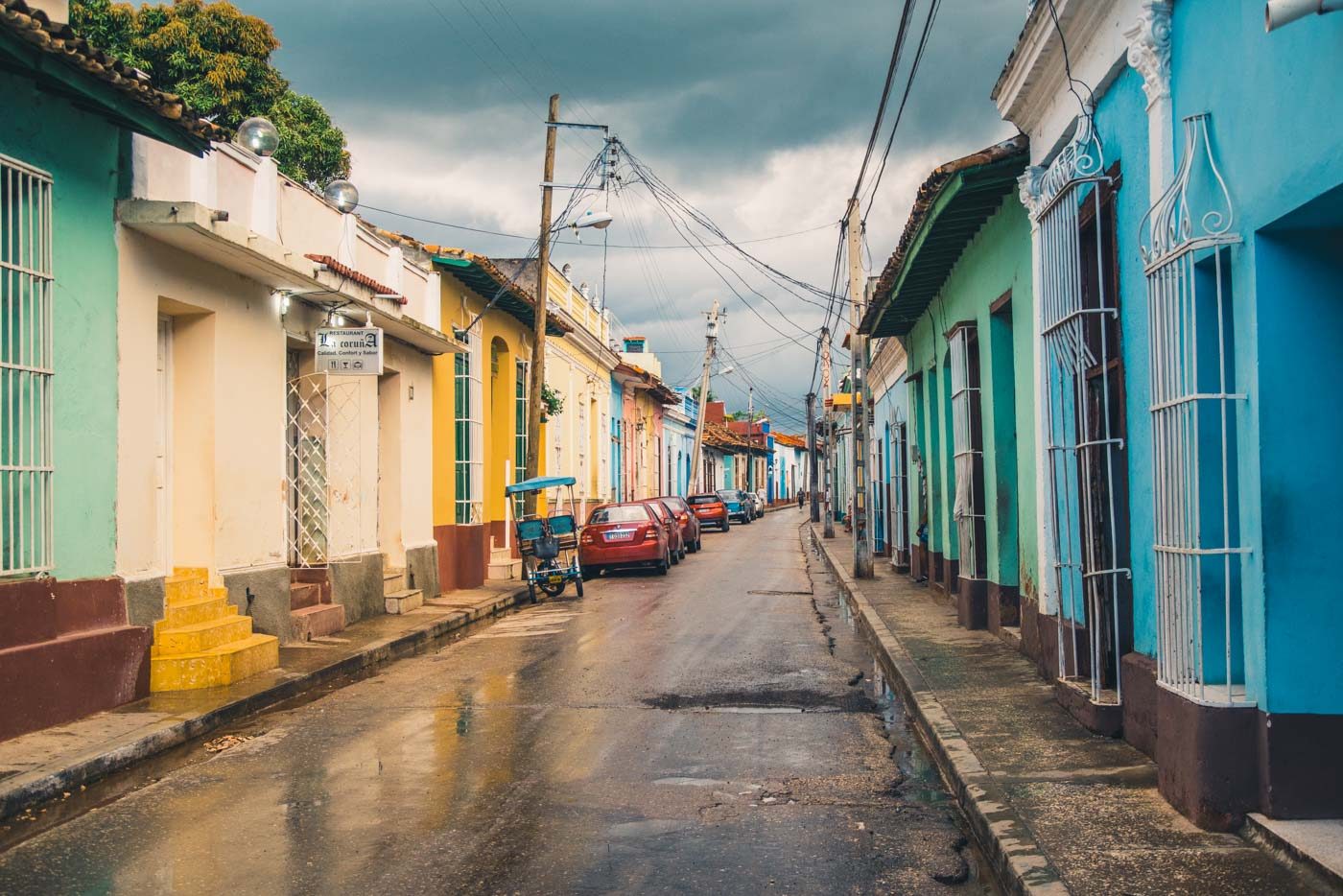
How To Get To Trinidad
Havana to Trinidad takes about 4 hours by car, but it is well worth the trip. You can also make the Havana to Trinidad journey by colectivo (shared taxi/car) or by bus with Viazul bus lines.
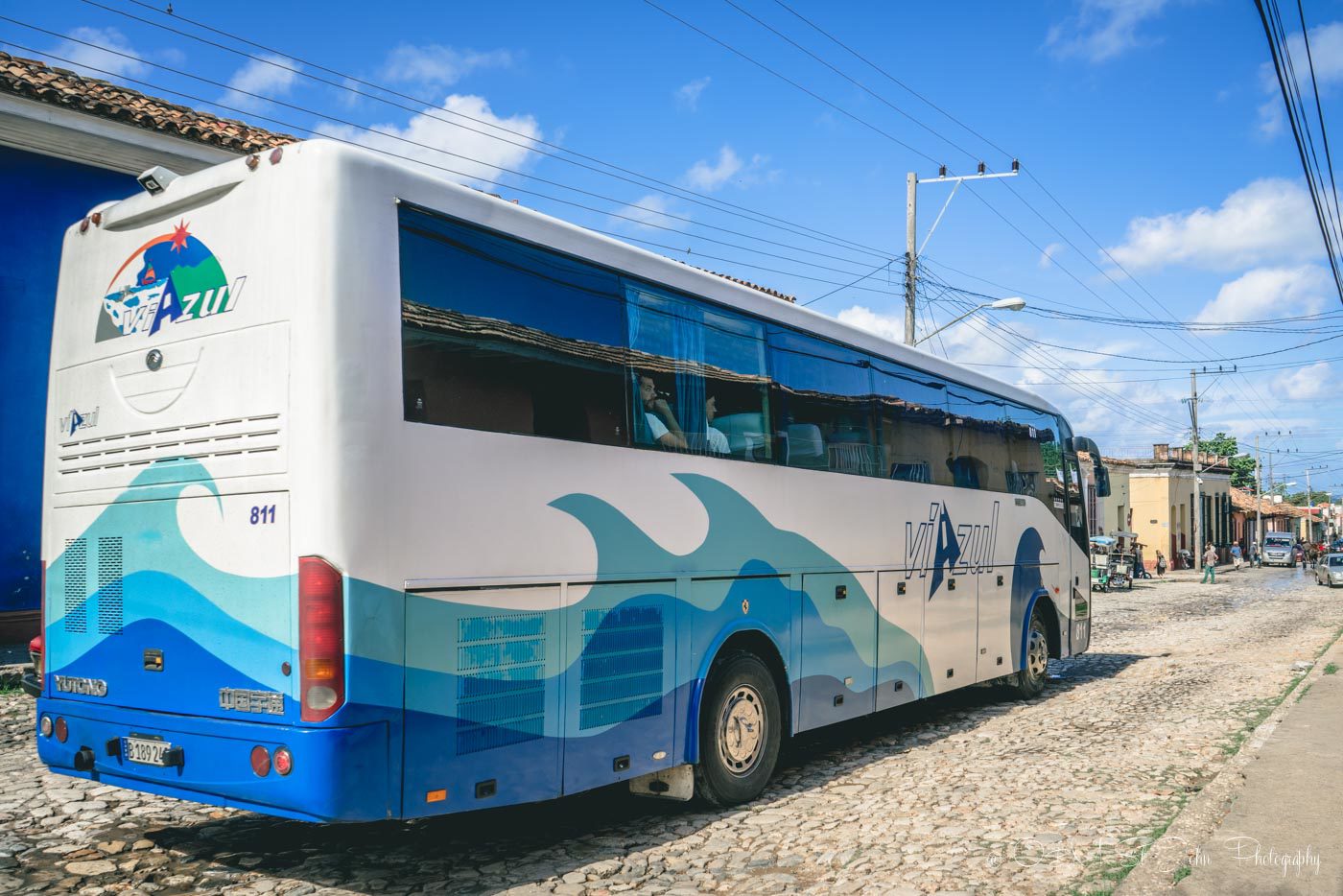
Top Things To Do In Trinidad, Cuba
Trinidad is truly a destination for all ages. If you’re taking a family holiday and wondering what to do in Trinidad, Cuba with the kids, there are plenty of activities on the beaches in Trinidad, Cuba.
Enjoy The Warm Waters Of The Caribbean Sea
Trinidad, Cuba beaches are bound to be a good time for anyone. You can easily spend the day at the nearby Playa Ancon, with shallow, placid waters, which will make it seem as though your bathtub has been transported to the tropics.
You can lie back on shaded deck chairs while being served drinks from the beach bar, and a coconut vendor is also on hand. It’s a short taxi ride to the beaches in Trinidad, Cuba, from the centre of town, but you can also make this part of the fun by choosing to travel by bicycle.
Other activities that can be organised are horseback riding, a trek to a waterfall and an old steam train journey through the sugarcane fields, where you can learn about the fascinating history of Trinidad.
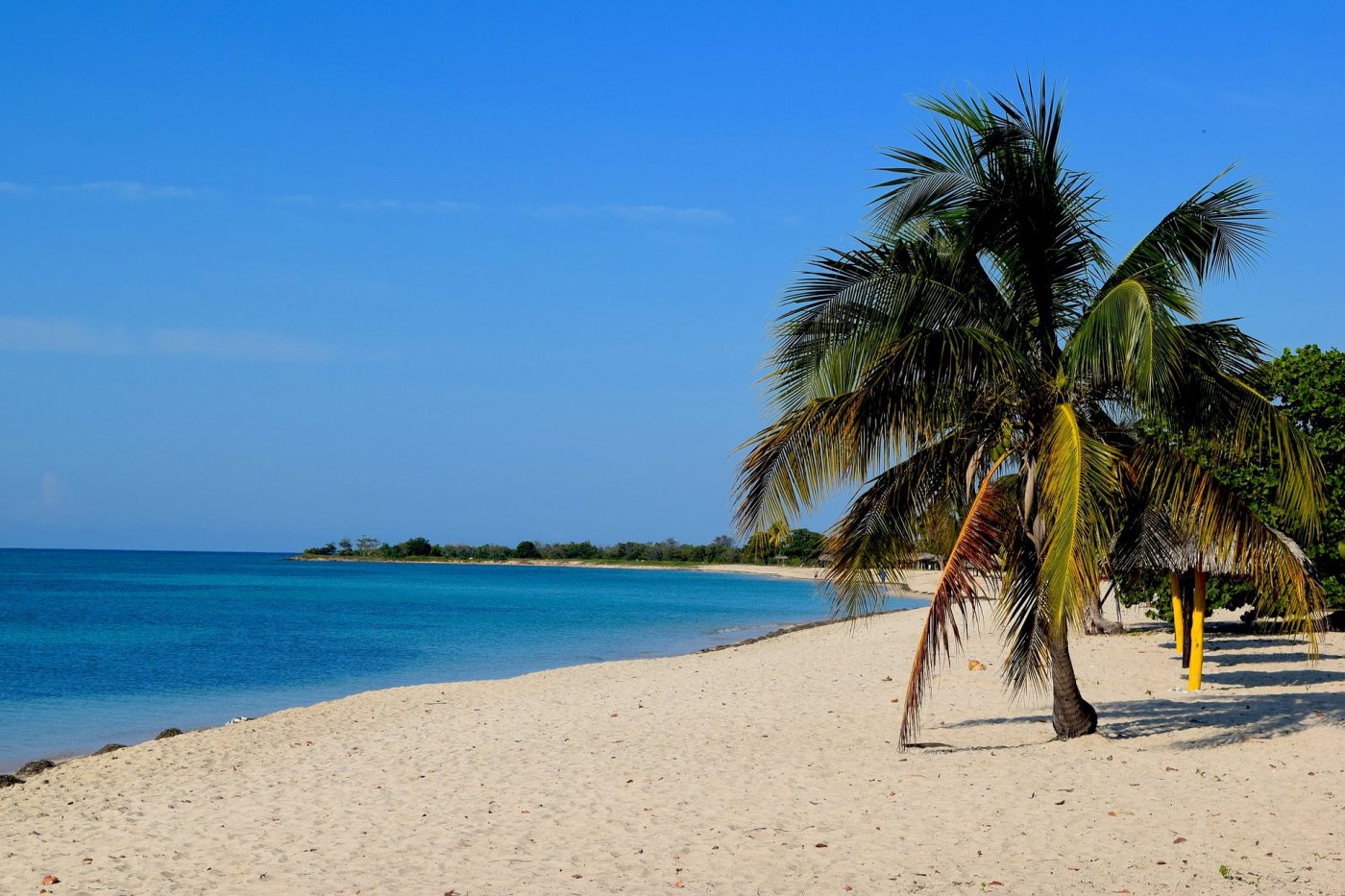
Explore The Historic Buildings At Plaza Mayor
As the main square of Trinidad, the Plaza Mayor is lined with lots of evidence of the town’s layered history. From centuries-old cathedrals to relics from the Cuban Revolution, there is plenty to see in the Plaza Mayor, and this is a great place for photographs.
A great place to start is the Convento de San Francisco, a 17th-century convent known for the amazing viewpoint provided by its bell tower.
Also located along Plaza Mayor is the Iglesias de la Santísima Trinidad, another historic church that isn’t as impressive as the Convento de San Francisco but is beautiful all the same.
Visit Trinidad’s Museums
Trinidad’s town centre itself has a wealth of museums – essentially attractive old houses with art galleries, artefacts, and furniture on display. Most of them also have wrap-around balconies where you get fabulous views over the town and to the romantic hills beyond. At night time, the Plaza Mayor is illuminated with old Victorian-style lamps and a sense of peace pervades the air.
Architecture enthusiasts will love the Museo de Arquitectura Colonial, located right next to the Plaza Mayor. This museum is housed in the historic home of the Sanches Iznaga family and is an excellent example of Spanish Colonial architecture. Its exhibits are centred around the layout of the city and how Trinidad was designed around the economy, which was dominated by the tobacco trade and the sugar industry.
Museo Historico Municipal, also known as Palacio Cantero, is another museum located just off of Plaza Mayor. Housed in a beautiful old mansion that once belonged to a sugar baron, this museum is full of arches and courtyards typical of the Spanish Colonial architecture in this city. Exhibits feature colonial-era furniture and artifacts from both pre-colonial and colonial periods.
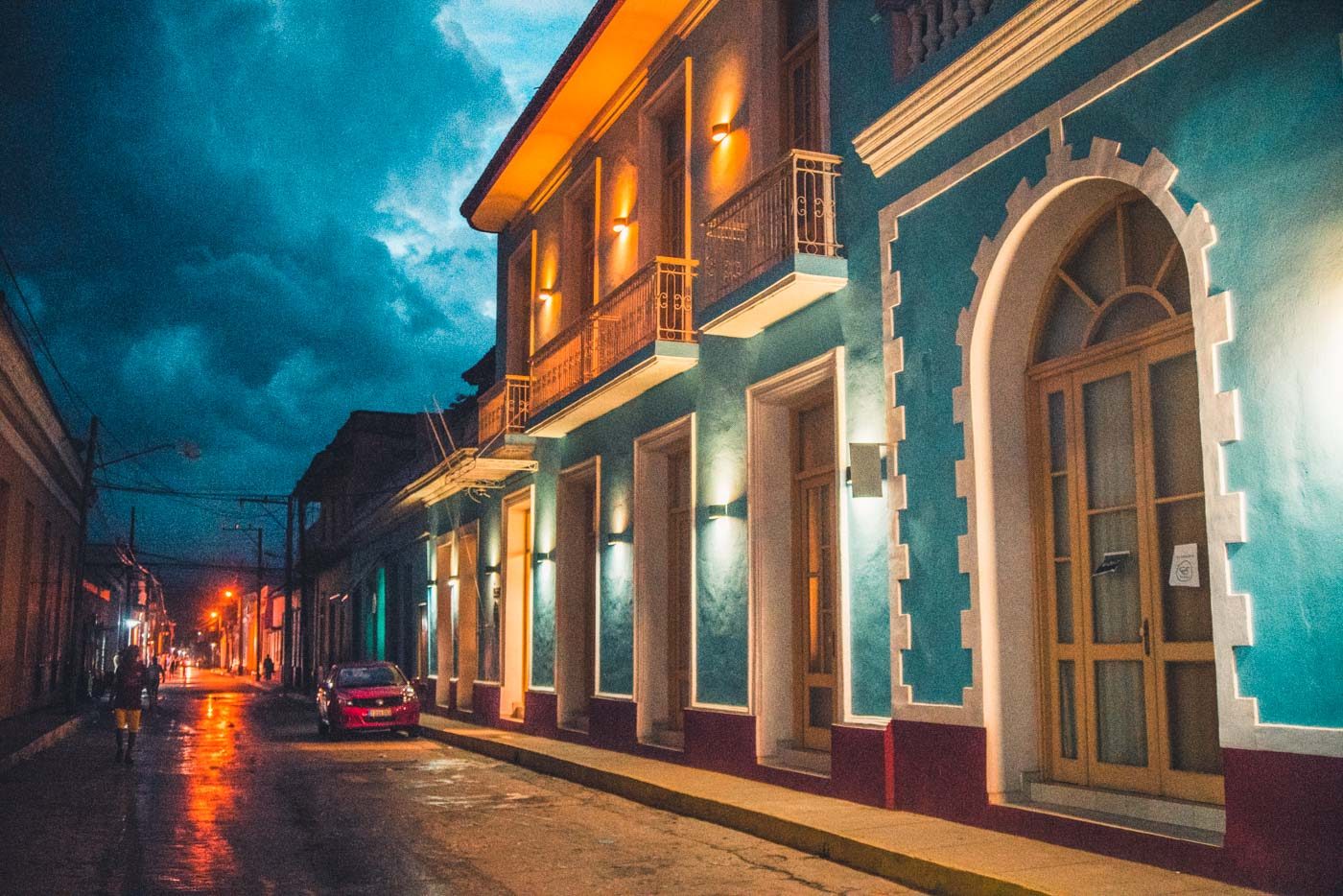
Check Out The Trinidad Nightlife
For those who are looking for fun things to do in Trinidad, Cuba when the sun goes down, Trinidad has a great variety of nightlife options. There’s a pulsing salsa club just off the Plaza Mayor called the Casa de la Musica, which also offers lessons and a number of other places where you can hear the soulful strains of music for which Cuba is famous.
If you’re looking for a full-on night clubbing experience, the Trinidad nightlife won’t disappoint you; head up the hill towards Las Cuevas (the best way to find it is to follow the crowds!). Near the hotel is an underground discotheque called Disco Ayala in the spectacular setting of a cave system. You’ll need to be patient to get in, though, as any semblance of an organised queue is totally ignored.
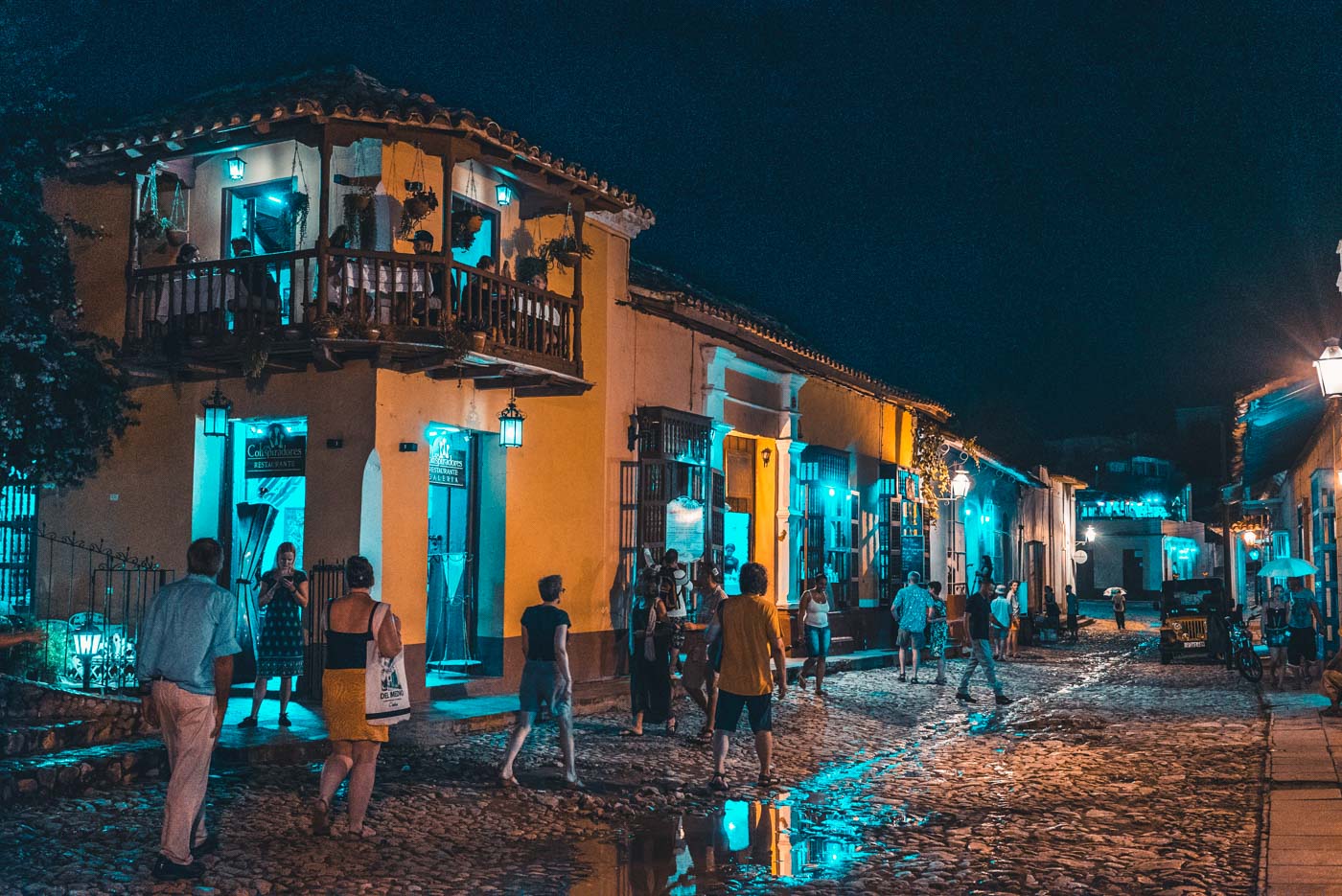

Day Trips From Trinidad, Cuba
If you want to experience the region beyond Trinidad, there are plenty of day trips from Trinidad, for you to consider for your Cuban adventures.
Cayo Blanco
Cayo Blanco is a small but beautiful island, just 15 km (9 miles) long and about 500 metres (545 yards)wide. It is totally uninhabited and has some of the most stunning reefs. Make sure you mark this spot on your Trinidad map and enjoy a day of snorkelling in the Caribbean.
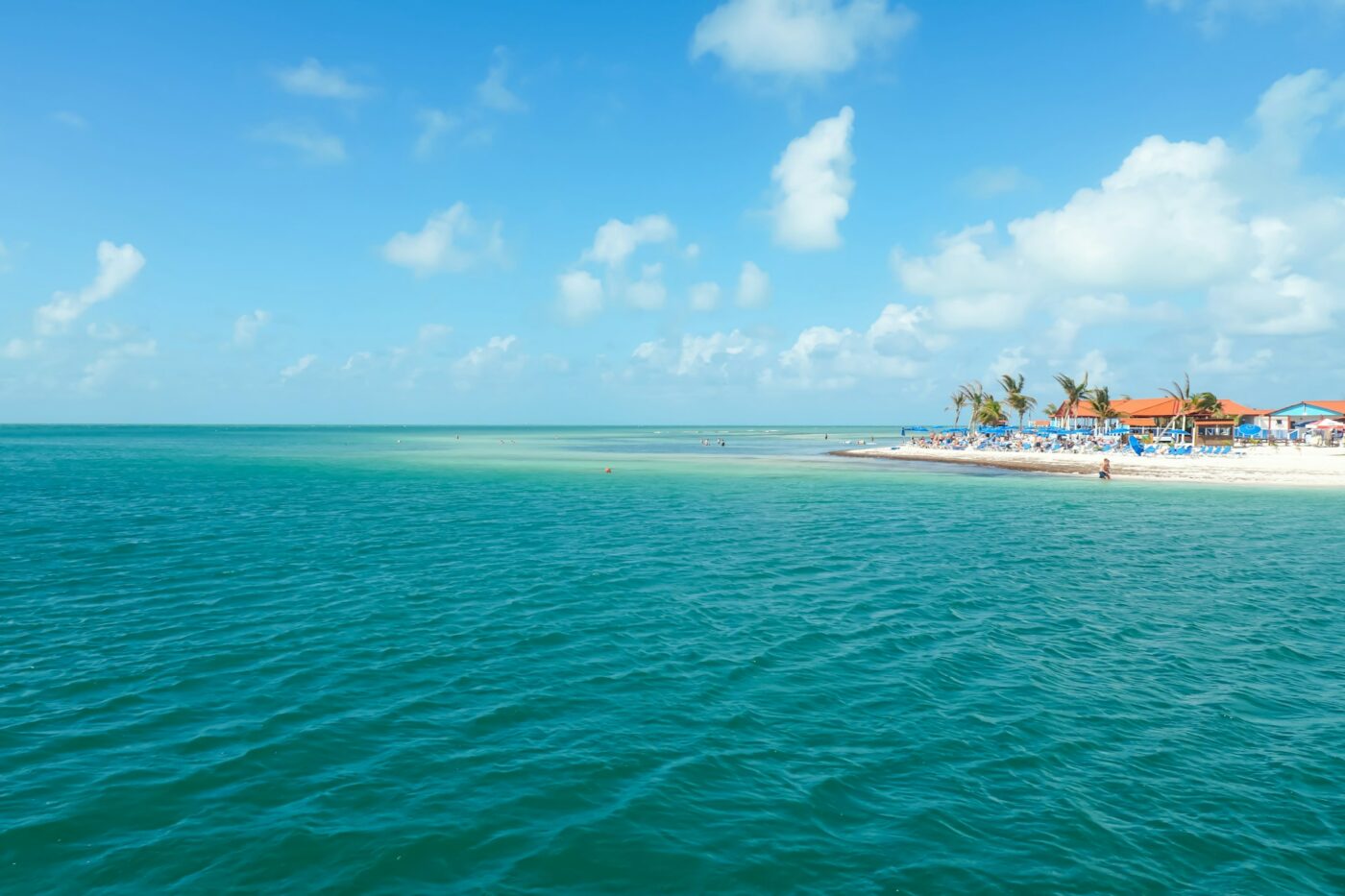
Topes de Collantes
If you are looking for more adventurous things to do in Trinidad, Cuba, then head to Topes de Collantes, a huge Nature Preserve just outside the city. You can go hiking and cool off with a swim at one of the park’s waterfalls.
Valle de los Ingenios
Visit to see the many historic sugar mills that greatly contributed to Cuba’s economy and the growth of Trinidad. There are still active sugar plantations and mills in the area, and you can see the many historic sites that flourished during the colonial era.
READ NEXT: Best Things to do in Cuba – Ultimate Itinerary
Where To Stay In Trinidad
Accommodation in Cuba is split into two main types – you can choose to stay in Trinidad, Cuba hotels, or a family-run casa. Note that the standard of Trinidad, Cuba hotels may not be quite what you have come to expect – generally, it’s advised to remove a star for an accurate ranking (i.e., a four-star hotel is more like a three-star).
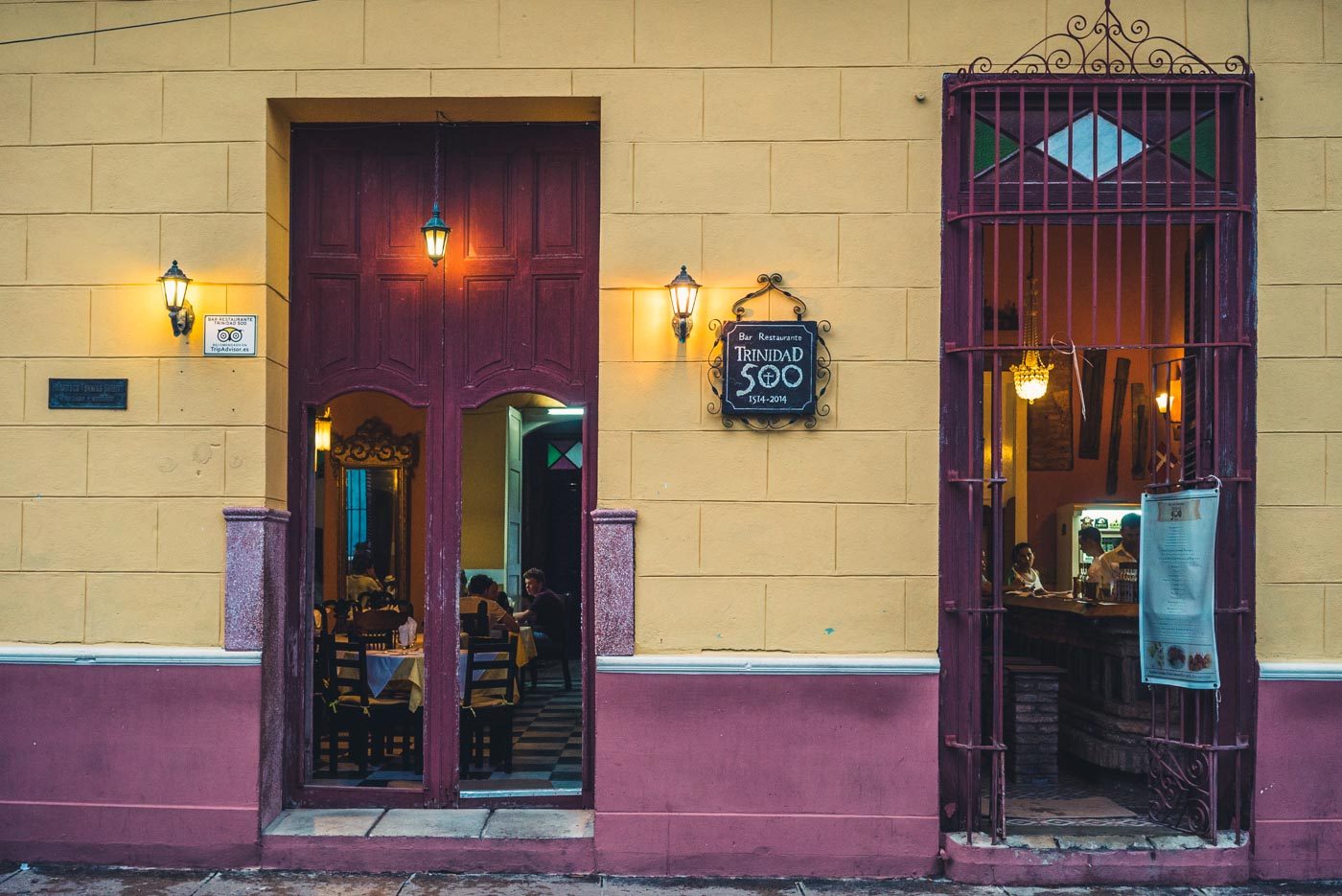
Iberostar Grand Hotel Trinidad
That said, when it comes to hotels in Trinidad, Cuba the very central Iberostar Grand Hotel Trinidad is pretty good, if a little bit lacking in character. A popular option for booking hotels in Trinidad, Cuba, is to go the all-inclusive route. The spacious rooms are comfortable and feature modern amenities like wifi, minibars, and satellite TV.
The hotel also has an onsite restaurant and bar, plus you’ll be within a short walking distance of several local spots. If your main goal is to see the historical sites downtown, Iberostar Grand Hotel Trinidad is a great choice, with Plaza Mayor being just a 5-minute walk away.
Memories Trinidad Del Mar
Memories Trinidad del Mar is a beachfront hotel that offers an outdoor swimming pool, a tennis court, a sauna and an onsite restaurant. All rooms feature private balconies with either tropical gardens or sea views. There is also a tour desk onsite that can help arrange excursions, water activities, or a horseback ride on the beach.
Villa Guajimico
Do check the location of where you stay as some properties, such as the Villa Guajimico, are a little further outside of the centre, which means you may spend more on public transport. This seaside hotel offers bungalow-style accommodations that are old but comfortable, with air conditioning, mini-fridges, and hot showers. There is plenty to explore in the area, and there is even a path leading to sea caves.
While you’re outside of the city, this is a great location for water activities, and this hotel is close to some of the best beaches in this part of Cuba. This is also a great place for snorkelling and scuba diving, and there is a dive centre very close to Villa Guajimico.
Casa Particulares
It depends on what you’re looking for, of course, but staying in a casa particular is the most sustainable and culturally insightful option.
There are many Casas to choose from, so it depends on what you’re looking for – if you want to try some of the best mojitos we have in Cuba, then La Casona 254 near the Parque Central Cespedes is recommended.
Casa El Tulipan is another casa in particular where a warm welcome and killer cocktails go hand in hand.
Many Casa Particulars don’t have a website and can’t be booked prior to arrival. But those that can be reserved ahead of time can be found on Airbnb.
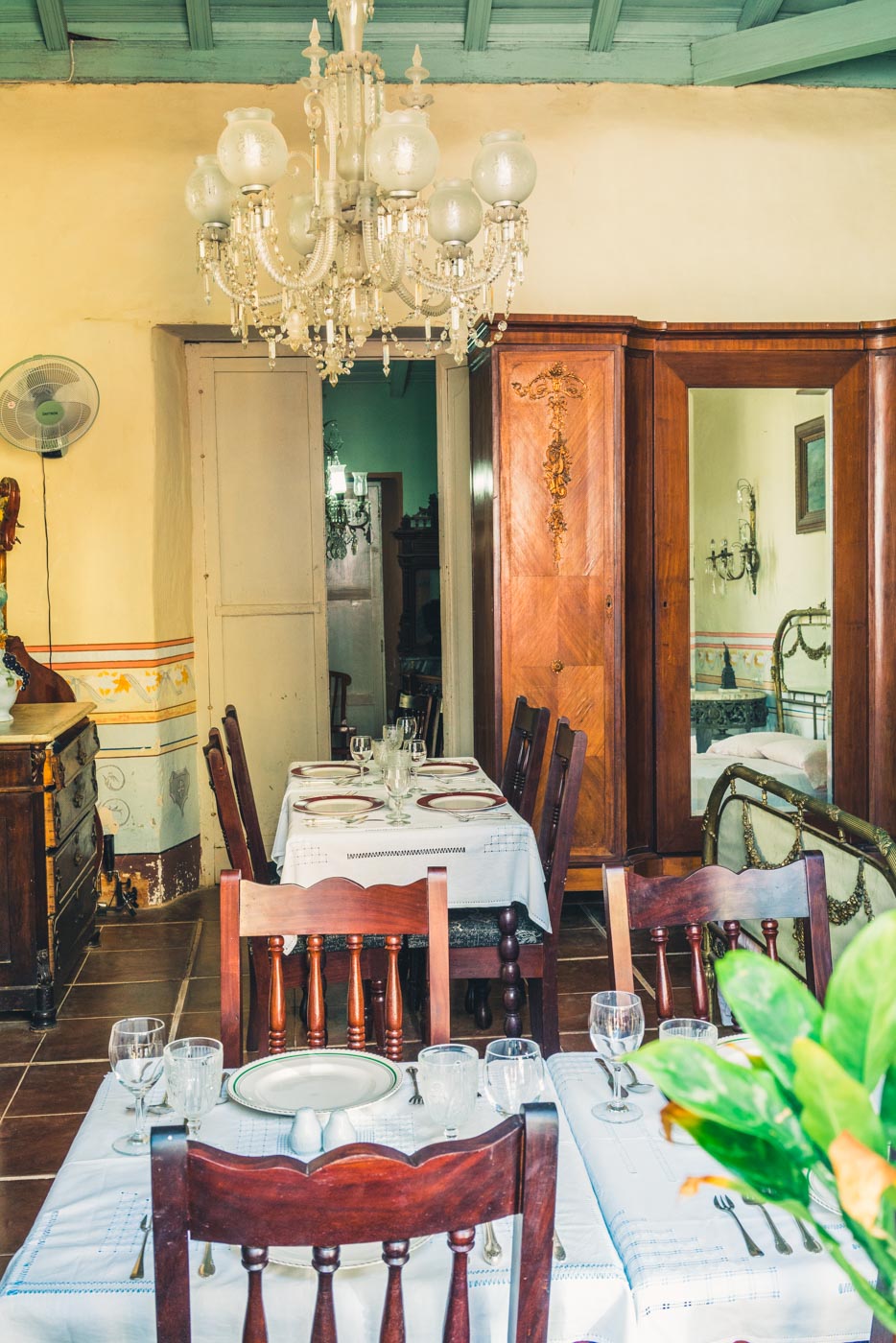
Where To Eat In Trinidad, Cuba
Although there are a lot of restaurants in Trinidad, the actual choices of Cuban food on the menus won’t vary that much. Eating out is definitely not the best part of a trip to Cuba. That said, cheap and tasty lobster is a fixture on most menus (there’s a lobster farm on the outskirts of Trinidad, so it may not necessarily be ‘freshly caught’), and if you love lobster, you’re in for a treat.
Try El Dorado at Piro Guinart #226 for lobster with plantain or Restaurante San Jose at Maceo #382 for lobster thermidor. The latter also does a tasty Ropa Vieja, which is a real Cuban specialty.
What Trinidad is particularly good for is atmospheric restaurants and paladars where you can eat in gorgeous courtyards.
Try the Sol Ananda at Real 45 for fine dining at its most opulent, with mahogany dining tables, white tablecloths and crystal glasses. Alternatively, the Taberna la Botija always has a line outside, though the ambience and live music are better than the food.
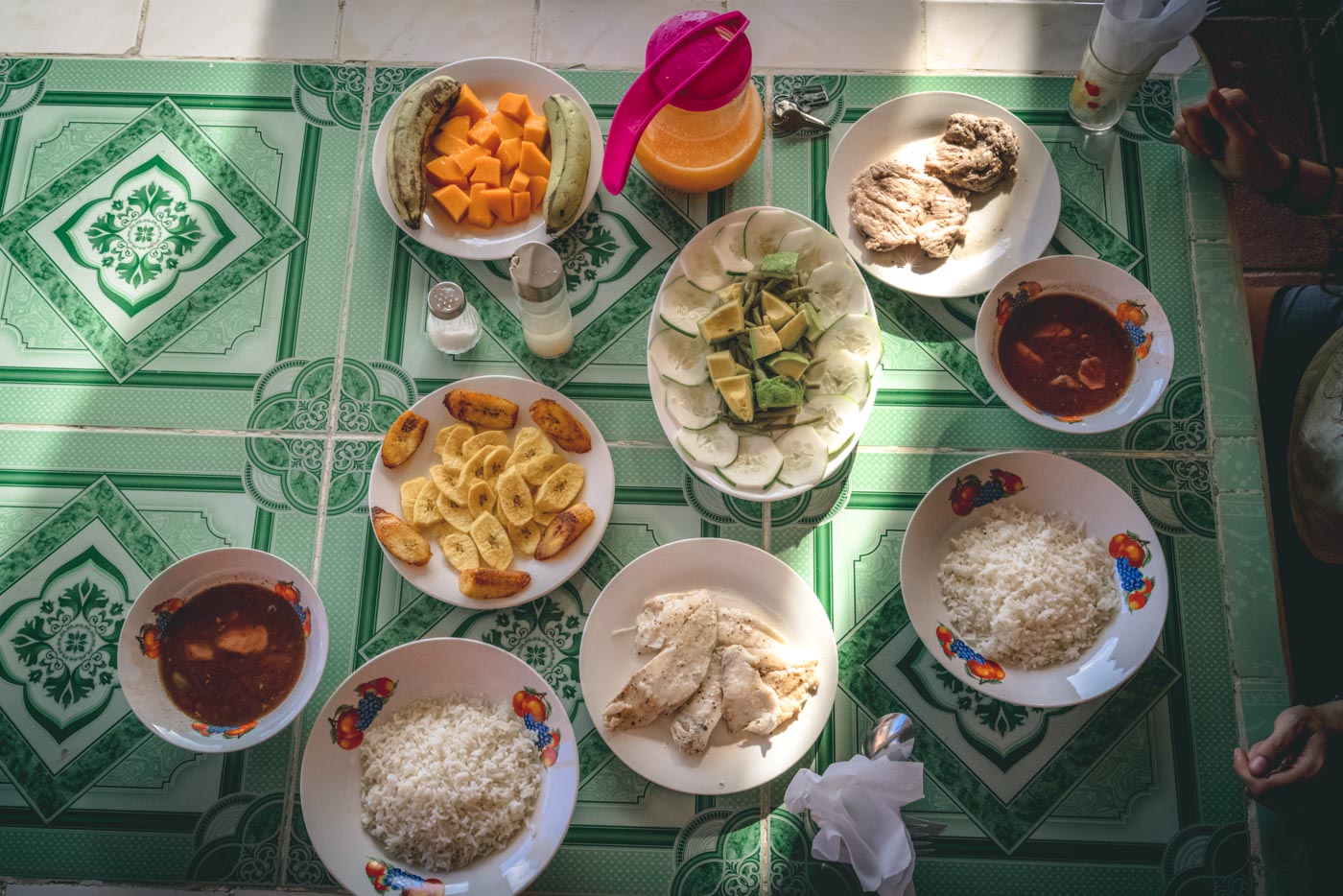
Where To Drink In Trinidad, Cuba
There are also lots of great bars in Trinidad. Casa de la Trova has local bands from 10 am to 1 am with a cover charge of 1 CUC, while the Ruinas del Teatro Brunet, on Maceo between Zerquera and Simón Bolívar, puts on a nightly Afro-Cuban cabaret show in the ruins of the city’s first theatre.
Meanwhile, La Nueva Era is a paladar with an impressive setting, though we were put off by the fact that there was a crocodile being kept in cruel conditions inside.
Looking for more restaurants to try while in Trinidad? This Lonely Planet’s guide, “Restaurants in Trinidad”, will give you plenty of ideas.
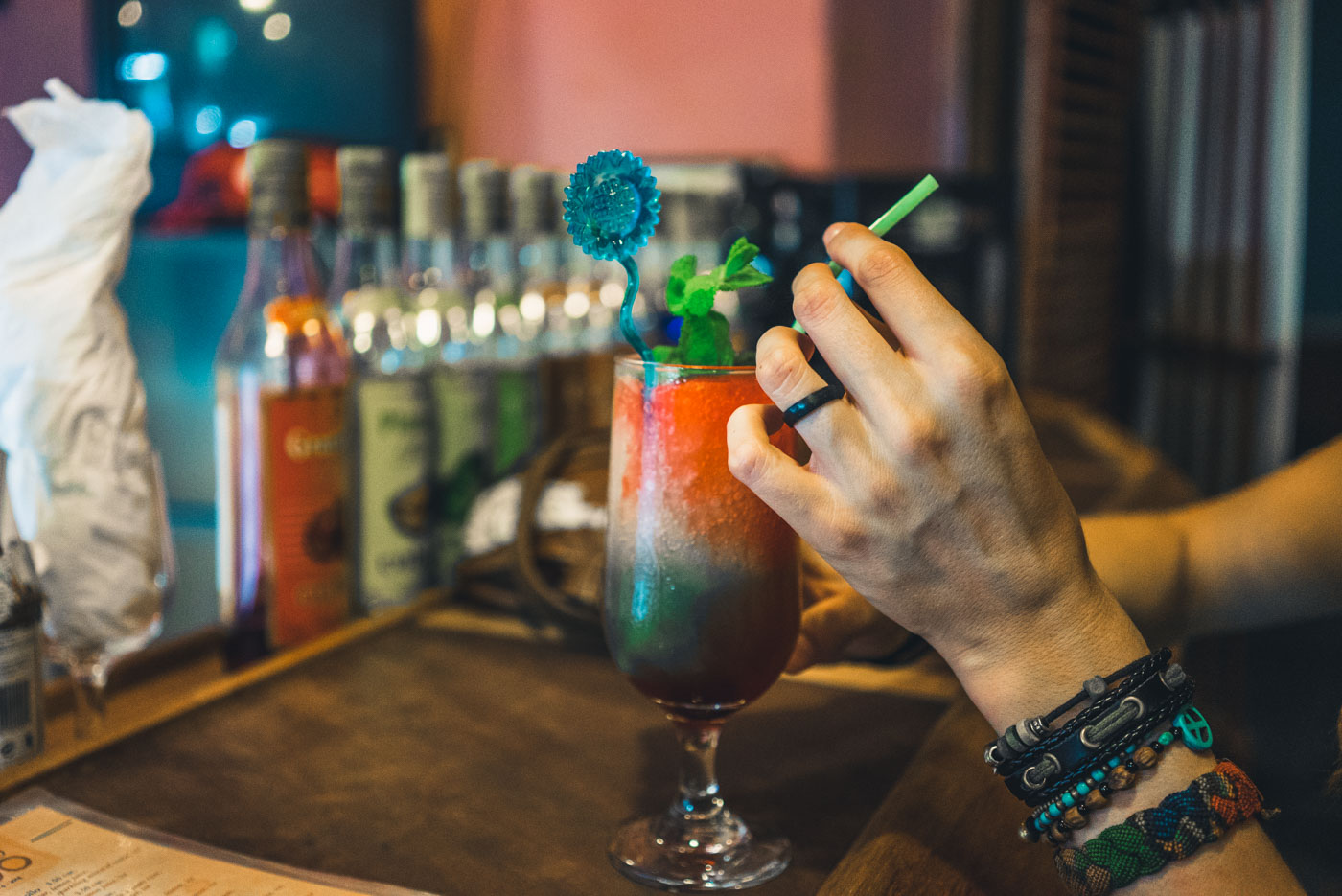
READ NEXT: Best Cuba Travel Tips
How Much Time Do You Need In Trinidad, Cuba?
If you allow yourself to succumb to the pace of Cuban life (highly recommended) and sample all the wonderful things to do in Trinidad, Cuba, then you can easily fill up to four or five days here. The beautiful city itself is small, but it’s a great base from which to explore the wider area of Sancti Spiritus. Hire a car and take your time. After all, the sun is hot, and if it isn’t worth doing manaña it isn’t worth doing at all!
Have you ever been to Trinidad, Cuba? What tips and advice would you give to first-time visitors?
About the author: Robert and Tamryn have travelled extensively throughout the Caribbean, but nowhere grabbed their attention quite like Cuba. So, they set up Cuban Life to reflect the edgy and exciting spirit of the island. They’re working with Cuban bloggers, artists and photographers to capture what Cuban culture means to people all over the world, whether they are part of the Miami diaspora or anywhere else. Follow Cuban Life on Twitter and Facebook to find out more.

